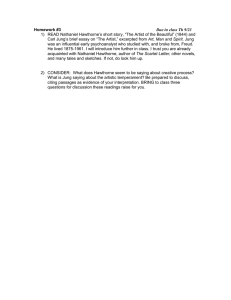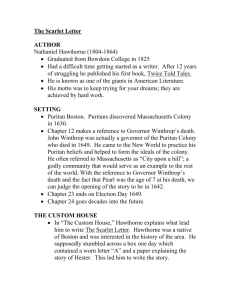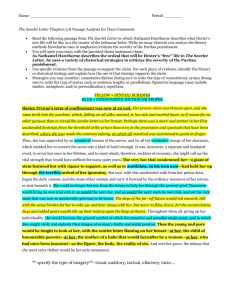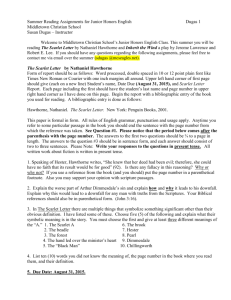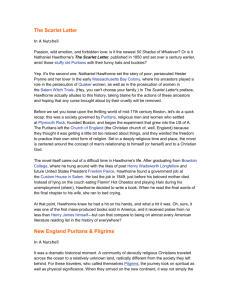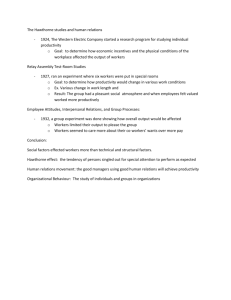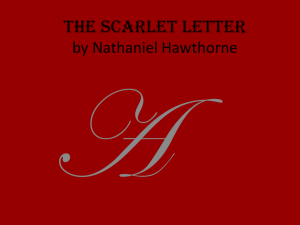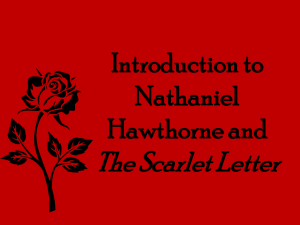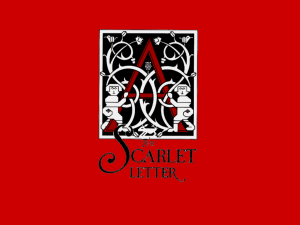Hawthorne, The Scarlet Letter, and Figurative Language
advertisement
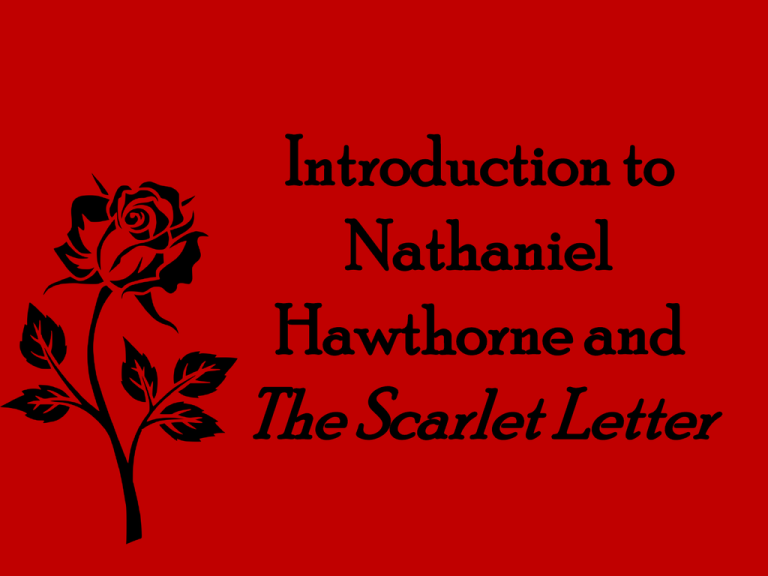
Introduction to Nathaniel Hawthorne and The Scarlet Letter Nathaniel Hawthorne • Born in Salem, MA in 1804 • Descendant of early Puritans • Death of his father at sea when he was 4 – lonely childhood • 1837 published Twice Told Tales – Poe thought he was a genius Nathaniel Hawthorne • Ancestor Judge Hathorne of Witch Trial infamy • Changed spelling of his name to Hawthorne • Puritan heritage informed and haunted all of his writing Nathaniel Hawthorne • Worked in the Boston Custom House to support writing • Good friends with other American authors: Ralph Waldo Emerson, Herman Melville, and Henry Wadsworth Longfellow • Married Sophia Peabody in 1846 • Died in 1864 Nathaniel Hawthorne • Known also for his short stories –“Dr. Heidegger’s Experiment” –“Young Goodman Brown” –“The Minister’s Black Veil” –“The Birthmark” –“Rappaccini’s Daughter” Hawthorne’s Writings • • • • Strange and mysterious Symbolic imagery Evil and the nature of sin Where Poe focuses on the mind, Hawthorne tends to focus on the heart, which leads to analysis of the mind American Romanticism • Break from the lack of creative artistry of the Puritans • Reflects the still innocent, pre-Civil War United States – Imagination – Intuition – Idealism – Inspiration – Individuality • Nature as revelation of God to the individual. Highly symbolic • Features elements of the supernatural • Favors emotion over intellect • Development of national pride The Scarlet Letter • Unity of Place – All action occurs in the center of Boston and the outskirts of the village – Three scaffold scenes: the beginning, the middle, and the end – the 4 main characters are present at each one of theses scenes The Scarlet Letter • Major Motifs: – Appearance vs. Reality – Individual vs. Society – Good vs. Evil / Dark vs. Light – Nature vs. Civilization / Civil Law vs. Natural Law – Hypocrisy – Isolation – Women and femininity – Supernatural The Scarlet Letter • Major Themes: – When society represses the expression of human needs, rebellion is a natural result. – Sin results in the psychological and physical deterioration of the sinner. – Humans need to feel connections to others. – The heart is superior to intellect. The Scarlet Letter • Major Symbols: – prison, prison door – the scaffold – rosebush , roses, weeds – the letter A – colors – red, green, & black – the forest – the town – Pearl – the black man – names of characters Puritan Judgment • Ministers and magistrates enacted the laws of God • All in the community were judges of the works and faith of others • Feared one’s sin would bring wrath on all • Children were sometimes put with new parents so their real parents could not spoil them Puritan Punishment • any offense could lead to the pillory or stocks • imported this punishment England • Entire purpose was public humiliation • Stocks were built on a scaffold in the center of the village, • townspeople could mock the offender and throw rotten vegetables or stones. • Aside from the offender’s hands being immobilized, his ears would frequently be nailed to the board behind his head Hawthorne himself even once described The Scarlet Letter as “positively a hell-fired story, into which I found it impossible to throw any cheering light.”
